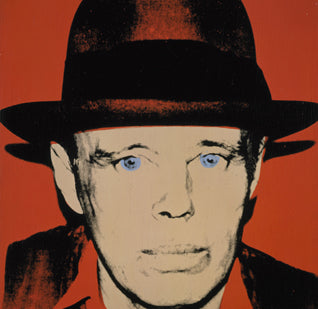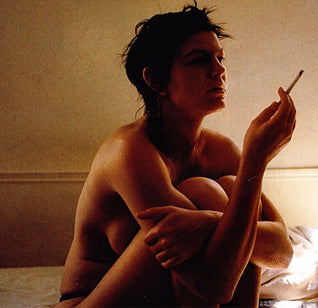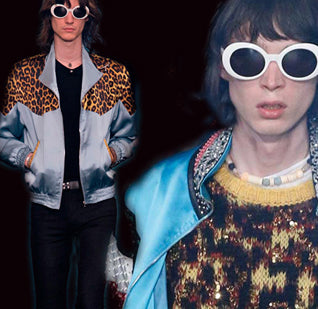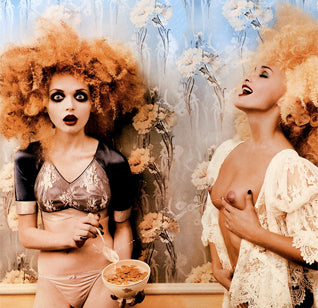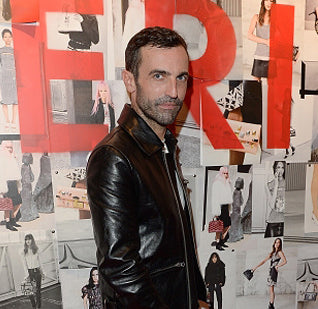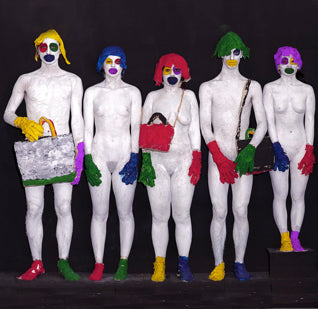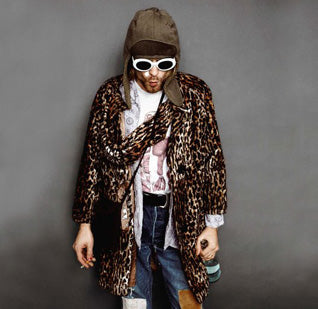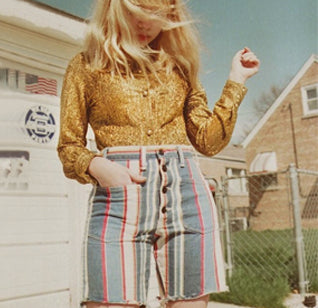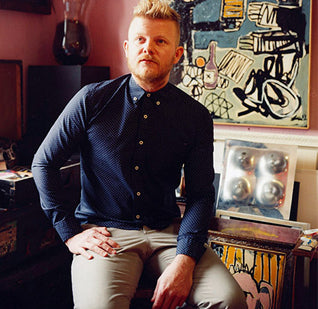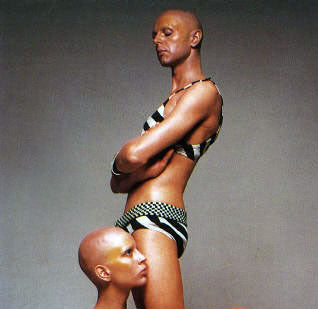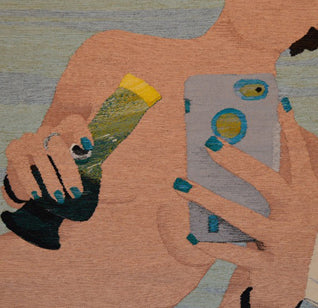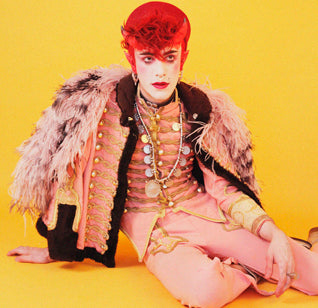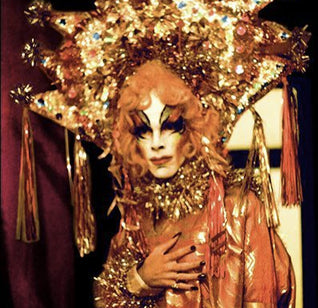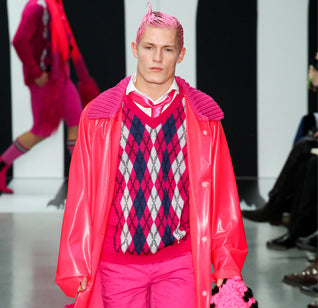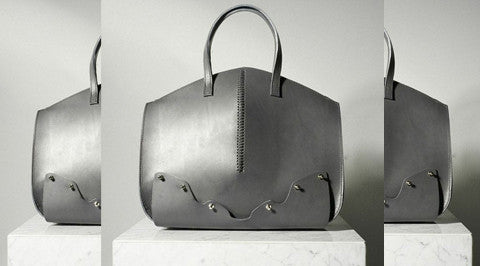FROM UNISEX TO ANTI-FASHION
Meet Rudi Gernreich, the first gender blender fashion activist
by Alessandro Esculapio
If you think we are not ready for topless swimsuits, think again. In the free thinking 60’s, fashion produced unisex miniskirts, see-through bras and futuristic jumpsuits. The mind behind these outrageous designs was Austrian-born, California-based Rudi Gernreich, pioneer of the gender revolution, activist and one of the first conceptual designers.
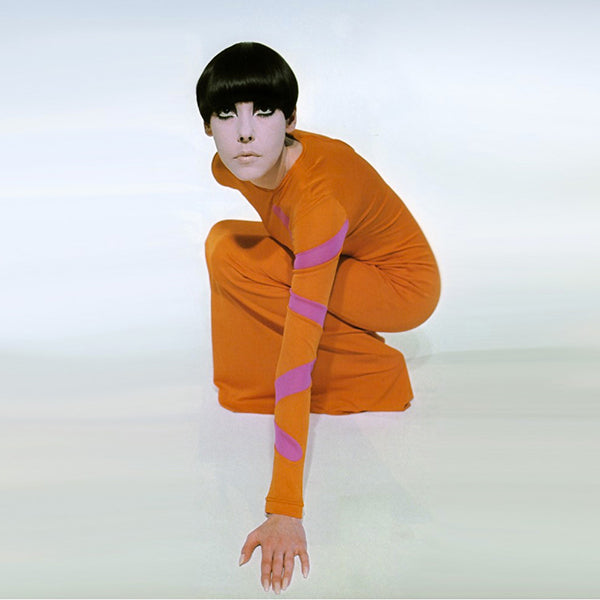
Peggy Moffitt played model and muse for the late fashion designer Rudi Gernreich. In the 1960's she developed a signature style that featured heavy, Kabuki-like makeup and an asymmetrical hair cut
Perhaps it is not a surprise that Gernreich initially struggled to have his voice heard, as in the 1950's his designs were considered too avant-garde for the mass market. On one hand major retailers turned them down, on the other legendary Vogue editor Diana Vreeland became his greatest supporter.

Peggy Moffitt modelling a Rudi Gernreich design, 1972. Image courtesy of William Claxton
Gernreich was always one step ahead in the fashion game. He designed tube knitted dresses and multi-coloured tunics in 1953, created the first bra-free swimwear for Bass in 1956, and showed models with bare knees as early as in 1961, anticipating the mini-skirt and paving the way for Mod fashion. An early advocate of equality at a time when the word “gender” was not even on the map, his stance was heavily criticised by many in the industry, not least for his democratic view of fashion. So much so that when he received the prestigious Coty American Fashion Critics Award in 1963, renowned designer Normal Norell returned his own award in protest, citing a Gernreich suit jacket with different lapels, as an example of his bad design and poor taste. Ironically, today the same garment wouldn’t look out of place at a Margiela show.

Left: Advertisement for the no-bra bra, Harper’s Baazar, April 1965, Right: Peggy Moffitt modelling a Rudi Gernreich design, 1972. Image courtesy of William Claxton
It wasn’t until 1964 that Rudi Gernreich became an internationally recognised household name. The design that gave him worldwide visibility was the scandalous topless bathing suit, or “monokini”, famously model by long-time collaborator and muse Peggy Moffitt. While Gernreich initially intended it to be a social statement advocating women’s liberation, Vreeland encouraged him to produce it for the mass market. The swimsuit became a commercial success, but also encountered many opponents. Several stores that carried the item were vandalised or received bomb threats, while the design itself was legally banned in some European countries and openly condemned by the Pope.

Unisex bikini thongs, 1974. Image courtesy of Bettmann/Corbis
Following the monokini craze, Gernreich went on to design the no-bra bra and poked fun once again at the industry in 1968 with his “unsignature scarf”, printed with random alphabet letters to mock the burgeoning obsession with designer logos.
In unison with the collective imagination of the Space Age, Gernreich also championed futuristic fashion. However, unlike his European contemporaries Paco Rabanne and Pierre Cardin, he had a relentless desire to highlight the natural human form. In his eyes the clothes of the future were functional, universal and unisex, but never asexual.

Rudi Gernreich designs photographed by Patricia Faure for the Expo70 event in Osaka, Japan. Images from the The Rudi Gernreich Book, Taschen, 1999
In 1971 he stated: “I see the conditions today like this: anonymity, universality, unisex, nudity as fact and not as kick, and above all reality. Status fashion is gone ... Comfort is the rationale ... The clothes are merely an instrument for the individual’s own body-message.”
Countless other designs, from pop art-inspired kaftans to the thong bikini, were created or popularised by Gernreich – who also experimented with furniture design and had at one point his own line of culinary soups. Much of what we see on the runways today owes something, directly or indirectly, to his revolutionary take on gender, sexuality and individual expression.

Unisex silk caftans, 1970, photograph by Hideki Fujii, from the The Rudi Gernreich Book, Taschen, 1999
His convictions led him to declare that “fashion will go out of fashion." In an age where the logic of fashion follows the unruly principle of “anything goes” and endless style variations are thrown at us quicker than it takes us to click “buy,” his prediction rings true now more than ever.








